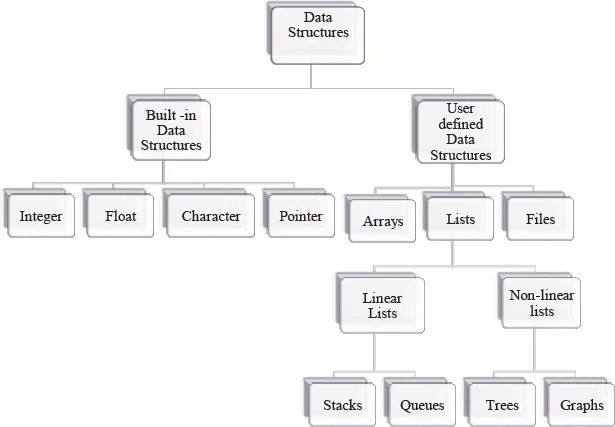
Quick Reference to Data Structures and Computer Algorithms, A
An Insight on the Beauty of Blockchain
Divya Joseph
- English
- ePUB (mobile friendly)
- Available on iOS & Android
Quick Reference to Data Structures and Computer Algorithms, A
An Insight on the Beauty of Blockchain
Divya Joseph
About This Book
For beginners to level up Core Programming Skills Key Features
- Simple and easy to understand.
- Useful for any level of students including B.E., BTech, MCA, BCA, B.Sc. (Computer Science), etc.
- Algorithms used in the book are well explained and illustrated step by step.
- Help students in understanding how data structures are implemented in programs.
- Each module contains question bank which includes questions for competitive examinations like UGC-NET, placement drives, and so on.
Description
The book gives full understanding of theoretical topic and easy implementation in programming. The book is going to help students in self-learning of data structures and in understanding how these concepts are implemented in programs. It contains lot of figures, which will help students to visualize the concept effectively. Diagrams help students to understand how the programs involving data structure concepts are implemented within the computer system.
Algorithms are included to clear the concept of data structure. Each algorithm is explained with figures to make student clearer about the concept. Sample data set is taken and step by step execution of algorithm is provided in the book to ensure the in – depth knowledge of students about the concept discussed. What Will You Learn
- New features and essential of Algorithms and Arrays.
- Linked List, its type and implementation.
- Stacks and Queues
- Trees and Graphs
- Searching and Sorting
- Greedy method
- Beauty of Blockchain
Who This Book Is For
This book is useful for all the students of B. Tech, B.E., MCA, BCA, B.Sc. (Computer Science), and so on. Person with basic knowledge in this field can understand the concept from the beginning of the book itself.
We think our book is one of a kind. We are trying to connect the past and the present here. The last module of our book is focussing on BLOCKCHAIN. It explains the concepts of blockchain through a different dimension, that is, explaining the data structure aspect of blockchain. Table of Contents
- Algorithm and Arrays
- Linked Lists
- Stacks and queues
- Trees and Graphs
- Searching and Sorting
- Greedy Method
- Beauty of Blockchain
- About the Author
Raji Ramakrishnan Nair, has done BCA, MCA and M. Tech (IT) and currently working as an Assistant Professor at the P. G. Department of Computer Applications of Marian College Kuttikkanam (Autonomous). She has 14 years of teaching experience and believes that teaching is all about being 'friend, philosopher and guide' to her students. This book is inspired by her passion to simplify complex subjects for easy understanding; the real contribution of a great teacher. She is a philanthropist as well, actively involved in many social causes, which made her students to engage in relief works in Kerala mega flood and resulted in two houses being built for flood victims. LinkedIn Profile: linkedin.com/in/raji-ramakrishnan-nair-8820b1171 Divya Joseph, is a Teacher by passion and profession. She has done MTech (CSE) and BTech (IT) from Amal Jyothi College of Engineering, Kanjirapally. Presently, she is working as an Assistant Professor in the P.G. Department of Computer Applications, Marian College Kuttikkanam (Autonomous). Alen Joseph, is an Associate Software Developer at UST Global Trivandrum. His great passion for teaching and research motivated him to write this book. He has done MCA from Marian College Kuttikkanam (Autonomous). He is a passionate tech enthusiast and his dream is to become a full-time researcher.
Frequently asked questions
Information
CHAPTER 1
Algorithms and Arrays
1.1 Introduction
| 1. | Input: An algorithm must be provided with zero or more inputs externally. |
| 2. | Output: At least one output must be obtained. |
| 3. | Definiteness: Every step of the algorithm should be unambiguous. |
| 4. | Finiteness: The execution of the algorithm must terminate after a finite number of steps. |
| 5. | Effectiveness: Every instruction must be very basic, so that any layman can understand the principle, using only pencil and paper. |
1.2 Basic Concepts – Data Structures and Types of Data Structure
1.2.1 Data Type
- Built – in Data Type
- Derived Data Type

| Characteristic | Description |
Linear | Here, the data items are arranged in a linear sequence. For example, array. |
Non-Linear | Here, the data types are not in sequence. For example, tree, graph. |
Homogeneous | Those data structures, where all the data elements are of same type, are known as homogeneous data structures. For example, array. |
Non-homogeneous | Those data structures, where data elements, may or may not be of the same data type, are known as non – homogeneous data structures. For example, structures. |
Static | Data structures, whose sizes and structures, associated to memory locations, are fixed during compile time, are known as static data structures. For example, array. |
Dynamic | Data structures, whose sizes and structures, associated to memory locations, can be expanded or shrunk, while execution, are known as dynamic data structures. For example, linked list created using pointers. |